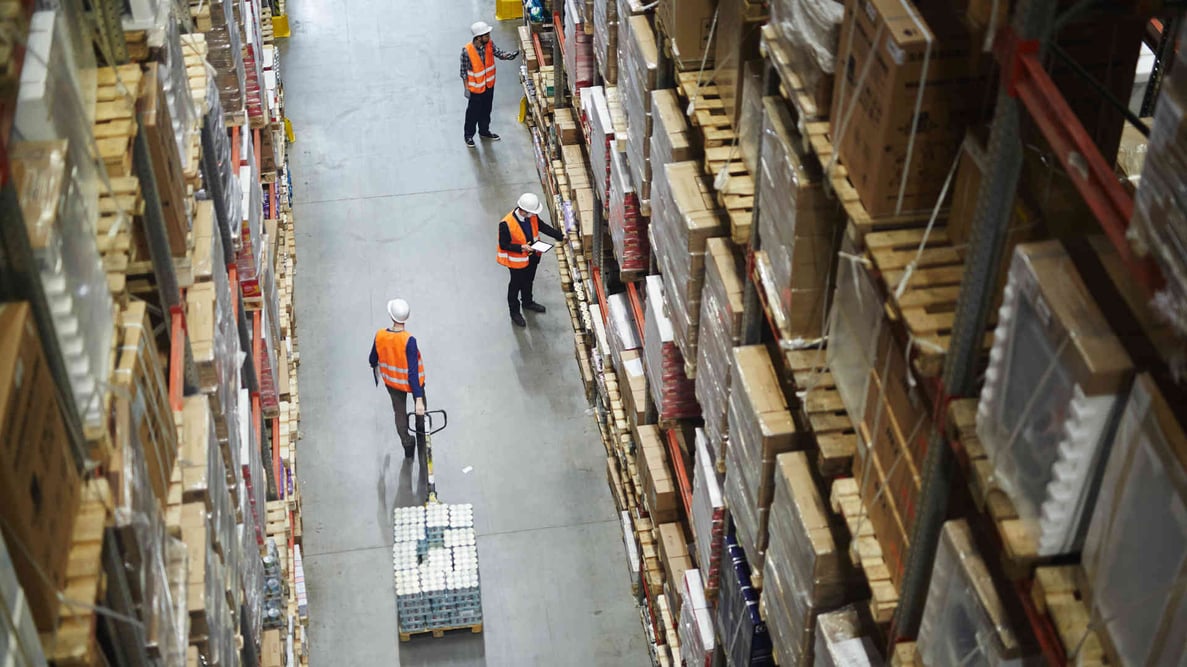Cash flow is king for ecommerce businesses, but by pulling the right levers, that cash flow can be manipulated. Having too much (or not enough) inventory in stock can hurt your cash flow and create problems for employees and customers alike.
These tips will prepare you to recognize when an inventory management system might be able to free up some cash and help you do your job better, so strap in and pay attention.
If you find yourself already experiencing one of these scenarios, get a closer look at the SkuNexus platform and see how our intelligent inventory management can automate your operations and make your life easier.
Growing Into an Inventory Management System
You’ll know when you need to start using an inventory management system once you encounter a few of the scenarios below.
Spoiler: they are not the most pleasant situations to be in, but are preventable.
You Lose Track of Inventory
Even if it’s just a few products every month, not tracking inventory location, quantity, and other important attributes such as expiration date, is not a good habit to keep.
Ideally, you want to know exactly what you’ve got, and where it is:
|
Location |
Quantity |
|
Warehouse |
3000 |
|
Retail Location A |
200 |
|
Retail Location B |
500 |
|
In transit to customers |
150 |
Important: these numbers should be updated in real-time. While that’s not difficult to manage with a good inventory management system, you’ll struggle if it’s managed through an Excel sheet, email, or a whiteboard in your office.
You Run Out of Stock
There’s not much worse than running out of stock when you’re getting a lot of orders in. Unless it’s a limited run or special edition, in which case you’ve done a great job.
That’s definitely not always the case when you run out of stock, though.
Customers have high expectations, that can be easily dashed when items aren’t available to purchase, are backordered, or are missing entirely.
Not knowing that you’ll run out of stock is a real problem here. Being caught by surprise is the last thing you want, and having to hurriedly reorder from a supplier or increase production to meet demand can lead to unhappy employees and mistakes during fulfillment.
Inventory management systems typically have notifications for low or out of stock products - and the best ones can reorder products from suppliers once they reach a certain threshold.
You Overstock
Not too much of a surprise that under and overstocking are reasons to move to an inventory management system, right? Improper inventory management will result in too much of this, and not enough of that.
Since many ecommerce businesses rely on cash flow to purchase new products and support their operations, typing up that cash in inventory that isn’t moving quickly will present sales as well as business challenges.
Using historical data, a robust inventory management system can forecast your sales data for upcoming periods of time, so that you have enough stock on hand to meet unexpected demand, but not so much that it’s sitting around for longer than it should.
Auditing Inventory Metrics
After doing a deep dive into the metrics that power your inventory and sales processes, you might find that certain inventory KPIs are falling behind.
Specifically - if the number of days to sell inventory is increasing, or your inventory turnover ratio is low, there may be something wrong in your fulfillment processes, or a hiccup you’re unaware of. If you’re not actively monitoring your inventory KPIs, then these may creep up on you.
A strong inventory management system will present these critical metrics to you, usually in a dashboard, and allow you to understand why they are the way they are.
This knowledge empowers you take control over errant processes, and get the numbers back on track.
Your Data is a Mess
Data quality isn’t something that just happens by accident. It requires careful planning and repeatable processes, that are followed by and understood by everyone in an organization.
When that doesn’t happen or isn’t in place, finding the data you’re looking is a slow and tedious process of double- and triple-checking, sorting through emails, filtering spreadsheets, and finally using that notepad tucked under your monitor.
Please, don’t let your data get out of control. Use an inventory management system to keep all of your inventory data in a single place.
You’ve Gone Omnichannel
Omnichannel, or multichannel, selling is exactly what it sounds like - selling through multiple channels.
Many merchants will use one or more ecommerce websites, several marketplaces and resellers, and wholesalers to move as much of their product as they can, and reach the largest possible market.
This is driven by the consumer and the way their purchasing habits have changed over time - but the consumer never notices the complexity that happens behind the scenes to make sure that every order placed is in their hands in just a few days.
If you’re using multiple systems to manage omnichannel sales, or don’t have your technology stack fully integrated, a single inventory management system can help consolidate tools and functionality, and make your processes flow like greased lightning.
Multiple Locations
Whether these locations are brick and mortar or distribution warehouses, adding more locations increases the complexity of commerce operations and fulfillment.
Many small businesses have a warehouse for each coast of the United States, which is a best practice to speed up fulfillment, and they use order or inventory management systems to route those orders to the closest location.
Best of all, this is a largely automated process. While inventory management systems may not have the ability to enable in-store fulfillment, a full featured order management system can turn your retail locations into mini-warehouses, and change the way orders are fulfilled.
Selling Wholesale
Switching from selling goods on an ecommerce website and a few other channels directly to consumers is a much different beast than selling hundreds or thousands of a product to another business.
The EDI connections usually necessary, logistics of the transaction, the method of transportation, and the way the purchase is made usually require an advanced system (or a lot of manual input) in order to be tracked efficiently.
For example, let’s say you sold 10,000 widgets to Acme, Inc. last month. They only sold 4,000, and they’re asking for another 10,000 this month. Assuming you know about any big sales or events that could clear that much inventory, chances are they aren’t going to sell all of it, and will have thousands of widgets still on hand at the end of this month.
With an inventory management system, you could easily document and track all of that.
Growth is Outstripping Operations
This is what you get for growing your business so quickly! It’s a good problem to have, but a problem nonetheless.
It’s easy to turn to a third party fulfillment provider for their services, but I’d relish the challenge of doing it myself.
In order to do that, I’d need to turn to an inventory management system to help me track and manage metrics, inventory, purchasing, and all the other details.
The ability to forecast sales, easily generate purchase orders, and track inventory as it moves are good pieces to have in play for high growth merchants, as they’ll reduce the manpower needed for operations and allow them to focus on working on the business, not in it.
Of course, there may come a time that an inventory management system doesn’t seem like enough.
The lines between commerce operations tools have blurred, so your best bet is to stick with a tool like SkuNexus that can manage your inventory, warehouses, orders, fulfillment, and vendors. It can scale with you as you grow, and ensure that you’re encountering as few of the problems mentioned above as possible.


